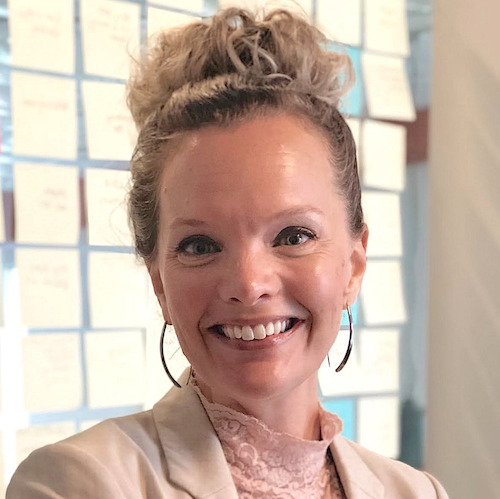
Across the ages, stories have been passed down to build culture, entertain, educate and inspire. Storytelling started as an oral tradition, evolved to pictures then to writing.
A memorable story discloses previously unknown information, offers a new perspective on known information or reveals an unforeseen twist or development. Today, many of our stories live online.
How can you apply storytelling to enrich your community, the lives of those you serve and your approach to business?
First, let’s define storytelling. In a 2022 study, Big Buzz uncovered that marketing executives in the senior living and care industry define storytelling in three ways:
1. Feeling
Our data revealed that your peers define storytelling primarily to evoke a feeling or elicit an emotional response. In storytelling marketing, you can offer a feeling of pleasure, a sense of belonging, a sense of loyalty or confirmation of previous experiences, thoughts or feelings — all critical to the resident’s or patient’s sense of well-being under your care. One respondent described this synapse as the moment “the [potential resident/patient or family] can identify with the brand as it holds their same values or ideas.”
2. Connectedness
Overwhelmingly, the data showed that feeling ties directly to a sense of connectedness. I relate to you, you relate to me. We understand each other. I will allow you to care for me. We must not stop at education; rather, it’s better to take prospective residents, patients and families all the way through inspiration into feeling ready to take the next step with you. One participant said that the purpose of storytelling is to “make the [potential resident/patient or family] feel enough to take action.”
3. Guidance on the journey
The data indicated that storytelling should take the potential resident, patient or family from where they are to someplace new. You are the guide. You know how trying life can be for an individual in need of assisted living services or skilled nursing care before they find you. Equally, you know the reality of those fully immersed in your care. You see the wonder and possibility. That is the guidance and inspiration you want to convey in storytelling marketing.
Next, let’s examine why storytelling is important in marketing. Eighty-six percent of our survey respondents said that storytelling is important in marketing for two reasons:
- Storytelling provides a deeper connection between an organization’s brand and its target audience. Potential residents, patients and families feel more bonded to what you offer and more readily choose you over the competition.
- Storytelling serves to build relationships. Over the course of communication with potential residents, patients and families, from written messaging on your organization’s website and blog to intake conversations, great storytelling bolsters the relationship.
Finally, let’s explore how you can apply storytelling at various points in your residents’ and patients’ journey with your community.
Social media marketing
More than half of our survey respondents said that 60% to 100% of their leads came from social media. Social media is like an open house for your organization. Share stories across social media to position your brand as different and beneficial to prospective patients and families. Social media marketing leads are top-of-the-funnel leads.
Content marketing
Nearly three-fourths of our survey respondents said that 30% to 100% of their leads came from content marketing. Share stories across content to nurture prospective residents, patients and families to understand you can provide the care and services they need. Here are some example content titles:
• Helping Adult Children with Caring for a Parent: Tips from Long-Term Care Nurses
• Rosie and Sally Put Sisterly Differences Aside to Assist Dad
• Preserving Peter’s Pride: One Family’s Journey in Senior Care
Content marketing leads are middle-of-the-funnel leads. Engaging content marketing stories show folks you are the expert, help them see they need care and services, and demonstrate you can be trusted to deliver that care and services. Gating content allows prospective residents, patients and families to share contact information in exchange for your expertise.
Marketing automation
Automated email campaigns can deliver storytelling marketing to those who have read or downloaded your content, coaxing them from the middle of the funnel to the bottom of the funnel. Although content marketing is educational, automated email campaigns are promotional. The gist is, “We noticed you downloaded our education. We are here to care for you and your family. For more assistance, contact us now.”
Add a compelling success story of a current resident and you will attract warm sales qualified leads ready for intake.
For more detail on how to expand storytelling at various points in the resident and family journey, including in the sales conversation, get The Complete Data-Driven eBook to Storytelling Marketing for Senior Living. You also will get full access to additional insights on marketing for assisted living communities, life plan communities, nursing homes, hospitals and other care sectors. For additional support, get a complimentary initial marketing plan.
Wendy O’Donovan Phillips is CEO of Big Buzz, an agency delivering strategy and consultation to drive focused marketing efforts for executives and teams nationwide. She is the author of two books available on Amazon, has been published in many healthcare journals, is a member of the Women’s President Organization, has been honored by the American Marketing Association for excellence in her field, and regularly lectures for healthcare organizations in front of audiences ranging from 25 to 6,000 attendees.
The opinions expressed in each McKnight’s Senior Living marketplace column are those of the author and are not necessarily those of McKnight’s Senior Living.
Have a column idea? See our submission guidelines here.




